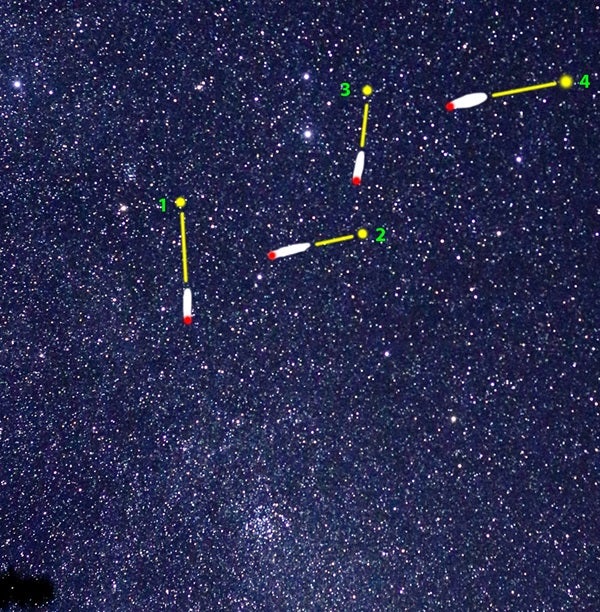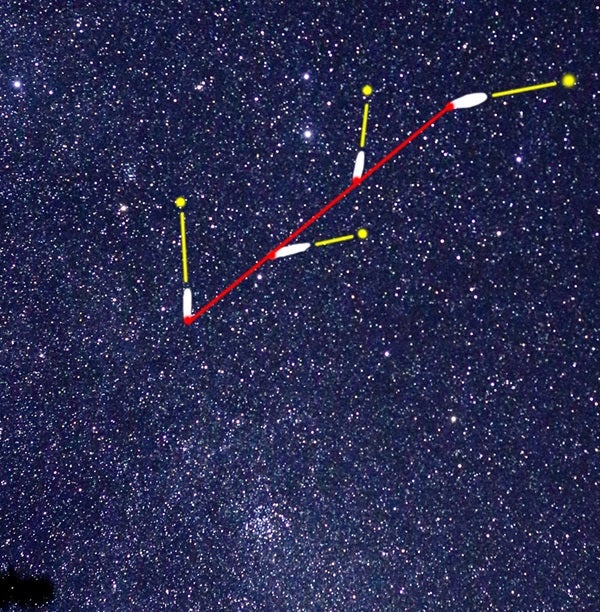A visual trickster
It doesn’t matter how skilled we are as observers, satellites have no shortage of visual tricks to confuse our brain as they sail across the playing field of the night sky. While satellites look like “stars” that move at a steady clip in one direction, it’s common for them to appear to gently weave among the other stars like a running back heading for the end zone.
The slight weaving is a well-known optical illusion that results from our eye-brain system. This complex mass of receptors and nerves has difficulty fixing on a moving point of light (satellite) at night, especially when seen against a jumble of other points of light (stars) whose orientations change with the turn of the head.
Sometimes, the flashes are so erratic in both magnitude and frequency that tracking their path requires a keen knowledge of the night sky. And therein lies the story of my “running back” satellite.
A series of flashes
I have to applaud the rocket booster or fragment of space junk I saw recently because it stopped me in my tracks with its seemingly impossible movements. Had I not persisted in watching it with a critical eye, I may have walked back in the house scratching my head.
It started with a prolonged, elongated flash lasting long enough for me to detect its direction (along the major axis of the flash). Scanning my eyes in the direction of motion, I waited for the next event. To my surprise, it occurred well below and to the right of the first flash, causing me to believe it was a different object.
The first photo-illustration (above, top) shows the location of the flash (red), the direction of elongation (white), and the expected location of the next event (yellow) for each object. After the fourth flash, however, it became clear that the satellite was, in fact, moving as it should: on a straight and steady course, but tumbling in a way so that its rotation axis was not aligned with its principal axis.
If the object itself were elongated, like a rocket body, this could explain the “fake out,” as sunlight slid along the length of the body. The second photo-illustration (above, bottom) shows that if you connect the red dots, the satellite is indeed moving along a straight line.
What’s interesting, however, is that if you try to connect the red dots with your eyes alone in the first image, the red dots seem to wiggle a bit. Perhaps, as they say, it’s all in your head (and mine!). As always, send your thoughts to sjomeara31@gmail.com.












